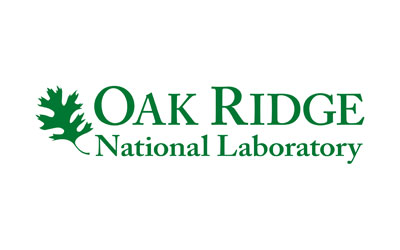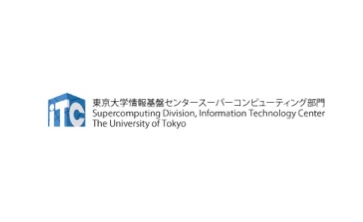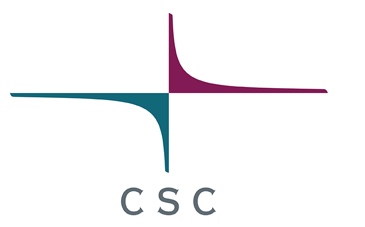Partners
Making ADAC happen
Founding Member Organizations

Oak Ridge National Laboratory (ORNL) is a Department of Energy (DOE) national laboratory, managed and operated by UT-Battelle, a non-profit limited liability company, organized and existing under the laws of the State of Tennessee, pursuant to DOE Contract No. DE-AC05-00OR22725. ORNL is the largest science and energy national laboratory in the DOE system, with unique scientific experts and tools often not available elsewhere. ORNL is home to DOE’s leadership computing facility, the Oak Ridge Leadership Computing Facility (OLCF), and has scientific programs focus on high-performance computing as well as materials, neutron science, energy, systems biology, and national security.

Tokyo Tech, located in Tokyo, Japan, is one of the leading research universities in Japan and is the largest institution for higher education in Japan dedicated to science and technology. It is home to the Global Scientific Information and Computing Center (GSIC), which houses one of the most powerful high performance computers in the world. This system supports research as well as advanced education in computer and computational sciences at Tokyo Tech, and also is made available to select projects at outside research institutes and industries.

ETH Zurich, located in Zurich, Switzerland, is considered one of the top universities in Europe, with academic programs in engineering, science, technology, mathematics, and management. It is home to the Swiss National Supercomputing Centre (Centro Svizzero di Calcolo Scientifico/CSCS), located in Lugano. ETH Zurich develops and provides key supercomputing capabilities required to solve important problems to science and/or society.
Regular Member Organizations

National Institute of Advanced Industrial Science and Technology, Department of Information Technology and Human Factors is located in Tokyo, Japan and is home to the Artificial Intelligence Research Center (AIRC). The AIRC aims to promote the implementation of AI in manufacturing, service, healthcare/caregiving, and security, and to strengthen Japan’s competitiveness in the manufacturing and service sectors, so that Japan continues to be among the most advanced nations; AIRC also aims to help achieve a more abundant society by new means, through coordination between AI and people.

RIKEN Center for Computational Science, located in Kobe, Japan, is one of the world’s leading research centers for high performance computing and the development of supercomputers, which have become essential tools for modern scientific development. The center is one of the world’s top-level research institutions for investigating “the science of computing,” or high-performance computer science, “the science by computing,” or so-called computational science, and their synergy deriving “the science for computation.”

The University of Tokyo Information Technology Center (ITC) is a core organization of the “Joint Usage/Research Center for Interdisciplinary Large-Scale Information Infrastructures” project, and a part of HPCI (the High-Performance Computing Infrastructure) operated by the Japanese Government. The Supercomputing Division (SCD) was originally established as the Supercomputing Center of the University of Tokyo in 1965, making it the oldest academic supercomputer center in Japan. The three main missions of SCD/ITC are (i) providing services for supercomputer operations and supporting supercomputer users, (ii) doing research, and (iii) providing education and training.

The National Computational Infrastructure (NCI) of the Australian National University, located in Canberra, Australia, is the nation’s most highly-integrated, high-performance research computing environment. NCI is built to deliver on national priorities and research excellence from across the scientific disciplines. We are driven by our primary objective of raising the ambition, impact, and outcomes of Australian research.

The Jülich Supercomputing Centre (JSC) at Forschungszentrum Jülich has been operating the first German supercomputing centre since 1987, and with the Jülich Institute for Advanced Simulation it is continuing the long tradition of scientific computing at Jülich. Computing time at the highest performance level is made available to researchers in Germany and Europe by means of an independent peer-review process. JSC’s research and development concentrates on mathematical modelling and numerical, especially parallel algorithms for quantum chemistry, molecular dynamics and Monte-Carlo simulations. The focus in the computer sciences is on cluster computing, performance analysis of parallel programs, visualization, computational steering and federated data services.

IT Center for Science, located in Espoo, Finland, is a Finnish center of expertise in information technology owned by the Finnish state and higher education institutions. They provide internationally high-quality information and communication technology expert services for higher education institutions, research institutes, culture, public administration and enterprises to help them thrive and benefit society at large. They have unique expertise in, among other things, data management, data analytics, scientific computing and interoperability of information systems.

The French Alternative Energies and Atomic Energy Commission (CEA) is a key player in research, development, and innovation in four main areas: fundamental research in the physical and life sciences, defense and security, low carbon energies (nuclear and renewable energies), and technological research for industry. CEA is active in the development of large scientific applications, tackling climate modelling, fusion energy, low-carbon energy, material sciences, global security, astrophysics, health. CEA is covering the full value chain from numerical simulation, artificial intelligence, and quantum computing.

Since its founding in 1827, KTH Royal Institute of Technology in Stockholm (Sweden) has grown to become one of Europe’s leading technical and engineering universities, as well as a key centre of intellectual talent and innovation. It is Sweden’s largest technical research and learning institution and home to students, researchers and faculty from around the world dedicated to advancing knowledge. KTH is home to several research groups developing applications for high-performance computers (HPC) and/or doing research on HPC architectures and technologies. Furthermore, KTH hosts a supercomputing centre that is part of Sweden’s HPC infrastructure NAISS.

Lawrence Livermore National Laboratory (LLNL) is a National Nuclear Security Administration, Department of Energy national laboratory, managed and operated by Lawrence Livermore National Security, LLC. It’s defining responsibility is ensuring the safety, security and reliability of the nation’s nuclear deterrent. Yet LLNL’s mission is broader than stockpile stewardship, as dangers ranging from nuclear proliferation and terrorism to energy shortages and climate change threaten national security and global stability. The Laboratory’s science and engineering are being applied to achieve breakthroughs for counterterrorism and nonproliferation, defense and intelligence, energy and environmental security.

Argonne is a multidisciplinary science and engineering research center, where talented scientists and engineers work together to answer the biggest questions facing humanity, from how to obtain affordable clean energy to protecting ourselves and our environment. The laboratory works in concert with universities, industry, and other national laboratories on questions and experiments too large for any one institution to do by itself. Through collaborations here and around the world, we strive to discover new ways to develop energy innovations through science, create novel materials molecule-by-molecule, and gain a deeper understanding of our planet, our climate, and the cosmos.

Sandia National Laboratories is a multimission laboratory managed and operated by National Technology and Engineering Solutions of Sandia, LLC., a wholly owned subsidiary of Honeywell International, Inc., for the U.S. Department of Energy’s National Nuclear Security Administration under contract DE-NA-0003525.
Affiliate Organizations

Centre for Development of Advanced Computing (C-DAC) is an organization under the Ministry of Electronics and Information Technology (MeitY), Government of India for carrying out research, development, and deployment of cutting-edge technologies in Information Technologies and Electronics (IT&E), and associated areas. It is committed to advancing computing capabilities and applications of IT&E to address diverse areas such as High-Performance Computing (HPC), Artificial Intelligence (AI), Health Informatics, Quantum Computing, and related domains. C-DAC is hosting the largest national high performance computing facility and also building multiple HPC facilities at premier institutes in the country under the National Supercomputing Mission. As an institution for high-end Research and Development, C-DAC has been constantly building capacities in emerging/ enabling technologies and innovating and leveraging its expertise, calibre, skill sets to develop and deploy IT products and solutions for different sectors of the economy.

Pacific Northwest National Laboratory (PNNL) advances the frontiers of knowledge, taking on some of the world’s greatest science and technology challenges. Distinctive strengths in chemistry, Earth sciences, biology, high-performance computing, and data science are central to our scientific discovery mission. Our research lays a foundation for innovations that advance sustainable energy through decarbonization and energy storage and enhance national security through nuclear materials and threat analyses. PNNL collaborates with academia in fundamental research and with industry to transition technologies to market. We are a national laboratory with Pacific Northwest roots and global reach.

Barcelona Supercomputing Center (BSC) is the leading supercomputing center in Spain. It specializes in high-performance computing and has a dual role: providing infrastructure and a supercomputing service for Spanish and European scientists, and generating knowledge and technology to be transferred to society. BSC is a public consortium owned by the Spanish Government Ministry of Science, Innovation and Universities (60%), the Catalan Department of Research and Universities (30%) and the Polytechnic University of Catalonia (10%).
